
East Lothian is one of the 32 council areas of Scotland, as well as a historic county, registration county and lieutenancy area. The county was called Haddingtonshire until 1921.

Midlothian is a historic county, registration county, lieutenancy area and one of 32 council areas of Scotland used for local government. Midlothian lies in the east-central Lowlands, bordering the City of Edinburgh council area, East Lothian and the Scottish Borders.

Alexander Carlyle MA DD FRSE was a Scottish church leader, and autobiographer. He served as Moderator of the General Assembly of the Church of Scotland in 1770/71.

The Battle of Pinkie, also known as the Battle of Pinkie Cleugh, took place on 10 September 1547 on the banks of the River Esk near Musselburgh, Scotland. The last pitched battle between Scotland and England before the Union of the Crowns, it was part of the conflict known as the Rough Wooing and is considered to have been the first modern battle in the British Isles. It was a catastrophic defeat for Scotland, where it became known as "Black Saturday". A highly detailed and illustrated English account of the battle and campaign authored by an eyewitness William Patten was published in London as propaganda four months after the battle.
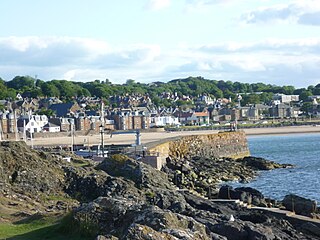
North Berwick is a seaside town and former royal burgh in East Lothian, Scotland. It is situated on the south shore of the Firth of Forth, approximately 20 miles (32 km) east-northeast of Edinburgh. North Berwick became a fashionable holiday resort in the nineteenth century because of its two sandy bays, the East Bay and the West Bay, and continues to attract holidaymakers. Golf courses at the ends of each bay are open to visitors.
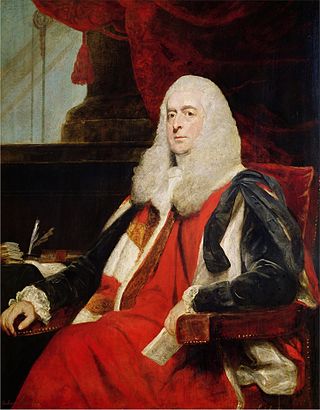
Alexander Wedderburn, 1st Earl of Rosslyn, PC, KC was a Scottish lawyer and politician who sat in the House of Commons between 1761 and 1780 when he was raised to the peerage as Baron Loughborough. He served as Lord High Chancellor of Great Britain from 1793 to 1801.

Musselburgh is the largest settlement in East Lothian, Scotland, on the coast of the Firth of Forth, 5 miles (8 km) east of Edinburgh city centre. It has a population of 21,100.

Clan Elphinstone is a Lowland Scottish clan.

The Wedderburn, later Ogilvy-Wedderburn Baronetcy, of Balindean in the County of Perth, is a title in the Baronetage of the United Kingdom created in 1803.

Sir Charles Dalrymple, 1st Baronet, was a Scottish Conservative politician.
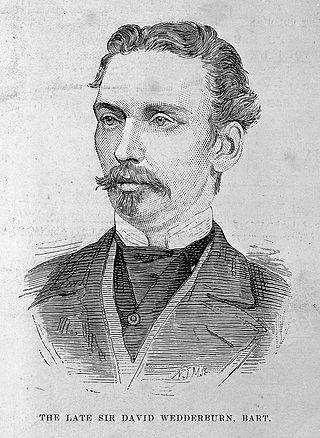
Sir David Wedderburn, 3rd Baronet was a British politician.
Sir James Dalrymple, 2nd Baronet was Member of Parliament for Haddington Burghs and the Principal Auditor of the Exchequer in Scotland.

Carberry Tower is a historic house in East Lothian, Scotland. The house is situated off the A6124 road, 2 miles (3.2 km) south-east of Musselburgh. Carberry, like Musselburgh is in the parish of Inveresk. It is protected as a Category B listed building.
Alexander Handyside Ritchie was a Scottish sculptor born in Musselburgh in 1804, the son of James Ritchie, a local brickmaker and ornamental plasterer, and his wife Euphemia. The father in turn was the son of a fisherman and amateur sculptor.
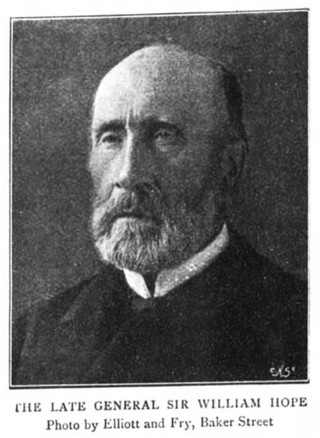
General Sir William Hope, 14th Baronet, was a British Army officer who became Commander-in-Chief, Scotland.

Newhailes House is a Palladian style country house which stands in 80 acres of parkland on the edge of the small town of Musselburgh in East Lothian, Scotland. Originally named Whitehills, it is a Category A listed building which is now occupied and maintained by the National Trust for Scotland.
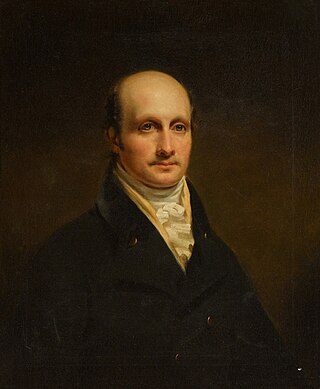
The Honourable James Wedderburn FRSE was a 19th-century Scottish judge who served as Solicitor General for Scotland from 1816, dying in office aged 39. He is sometimes called James Wedderburn-Colville.
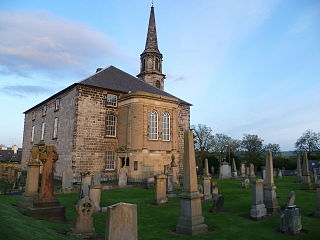
St Michael’s Church, Inveresk is a Church of Scotland church serving the parish of Musselburgh: St Michael's Inveresk, in Scotland. Known as "the Visible Kirk" because of its prominent position at the top of the hill within the historic village of Inveresk, it is a Category A listed building.

Hew Dalrymple, Lord Drummore (1690–1755) was a Scottish judge and Senator of the College of Justice.
























